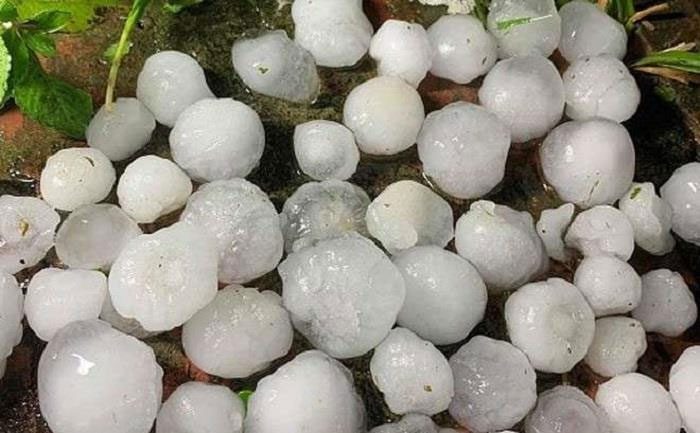Recently, hailstorms in northern provinces such as Ha Giang, Lao Cai, Lai Chau, Son La, Cao Bang, and Yen Bai resulted in fatalities and the destruction of thousands of homes.
Explaining this phenomenon, Professor Tran Thuc, former director of the Institute of Meteorology, Hydrology, and Climate Change, stated that this is the result of the transition from winter to summer. When the monsoon arrives, cold air pushes warm air upward, creating disturbances and significant convection, which leads to hail. This phenomenon often occurs in the northern mountainous regions, where there is a conflict between the cold air mass above and the warm air mass below.
“Hail of such large size, while very dangerous, is not unusual; it has happened in the past. What is unusual is the high density of occurrences,” Thuc affirmed.

Hail the size of chicken eggs has left many families exposed to the elements.
Regarding the impact of large hail on residents’ homes, Dr. Ngo Doan Duc, President of the Vietnam Architects Association’s Consulting Federation, stated that he disagrees with using cement materials for roofing, as the structure is easily destroyed by the heavy, dense, and intense rainfall associated with hail.
“Cement materials are hazardous and should not be used. These compressed blocks are brittle and cannot withstand hailstones the size of a fist. For now, to mitigate the damage, we can only use metal roofing, including galvanized steel. This type of roofing material can withstand the impact of hail because it is made from iron and zinc. In contrast, cement materials may provide temporary protection but will easily be destroyed afterward,” Duc explained.
This expert believes that metal roofing is a viable material for disaster resilience, while other materials warrant caution regarding their safety levels. Furthermore, relevant authorities must quickly disseminate the importance of using metal roofing to ensure the safety of residents in light of ongoing hailstorms that could lead to roof punctures or complete structural collapses.
“We need to consider both immediate and long-term solutions. It is entirely possible to install metal roofs, upgrade promptly, and replace tiles or makeshift roofs that have been damaged by hail. In the long run, it is necessary to evaluate the most cost-effective and practical materials for builders to provide to residents to combat hail,” Duc noted.




















































